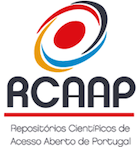Life is (not) a game: the abysses of image in the film eXistenZ
DOI:
https://doi.org/10.25770/artc.25289Keywords:
David Cronenberg, eXistenz, cinema, science fiction, cibercultureAbstract
I wrote this essay on the film eXistenZ (Canada/UK/France, 1999) in 2007, at the request of my undergraduate students, who were committed to editing a special issue of Portfolio Magazine on the theme of impact of new technologies in everyday life. The film had been made by David Cronenberg eight years earlier, at the end of a decade in which video games and online entertainment platforms had seen an exponential development. In my case, I was mainly interested in cinema issues – Cronenberg was always one of my favourite contemporary filmmakers - and the way in which its forms allow us to “access” to more-than-human dimensions. In its own way, cinema has always been a screen of “virtual reality”, another space, perhaps Foucaultian, a “possible world”, which - like the inspiring science fiction of Isaac Asimov (1920-1992), writer and scientist, biochemist, whose stories fascinated me in my childhood and adolescence – helped to install my passion for this limbo of (un)knowledge that forms when art and science intersect. It was this persistent fascination with the abyss of Cronenberg's images that led me to the film again, in 2015, now to extract from it, at the limit, a concept of game, to be presented in the context of a workshop. But, thirteen years after the first writing exercise on eXistenZ – which I present you here with minimal changes – I reread these lines and discover in them an extraordinary possible mirror of the present. One says that cinema is not life, and that life is not a game. But, in defence of cinema, which Aristotle did not know, I invoke his Poetics, to say: cinema as poetry - unlike history - never speaks of what life was but what it could be ...
Downloads
Published
How to Cite
Issue
Section
License
Copyright (c) 2021 artciencia.com, Revista de Arte, Ciência e Comunicação

This work is licensed under a Creative Commons Attribution-NonCommercial 4.0 International License.
It is assumed as Author the person (natural or legal) whose name is indicated as such in the work, as embodied practice, or announced to the public by any kind of use or communication. It is recommended that the submitted works do not exceed the total number of four authors. In cases where the number of authors exceeds four, the editors will, ultimately, decide about the acceptance of the submitted work.
TERMS
By submitting a paper to artciencia.com the author accepts, without any kind of reservation, the terms indicated below.
The mere act of submitting a paper is assumed as full comprehension and acceptance, even if in tacit form, of these terms and ignorance about them cannot be invoked.
Authors who publish in artciencia.com, Revista de Arte, Ciência e Comunicação will release their contributions under the Creative Commons Licence CC-BY-NC 4.0: «Licensees may copy, distribute, display, and perform the work and make derivative works based on it only for non-commercial purposes».
The author retains the rights to his work, but its publication in artciencia.com automatically implies the complete and exclusive assignment of copyright to the first edition.
The author is aware that he will not receive any payment / copyright compensation relating to the work submitted despite it is, or not, published.
Similarly, artciencia.com will not charge the author any submission, publishing or distribution fees related with the submitted paper.
The views and opinions expressed in published works are the sole responsibility of the author and may not reflect the editorial policy of artciencia.com.
It should be noted that artciencia.com can reject, by decision of the editors, any submission that manifestly collides with the journal's editorial policy. In such cases the author will be informed of that decision.
After the first publication, the author is authorized to take on additional contracts, independent of artciencia.com, for the dissemination of his work by other means. He must, in that case, to always safeguard the full citation of the original publication.
The author of a published paper is encouraged and has permission to distribute his work by any means, safeguarding the aspects mentioned in the previous paragraph.



